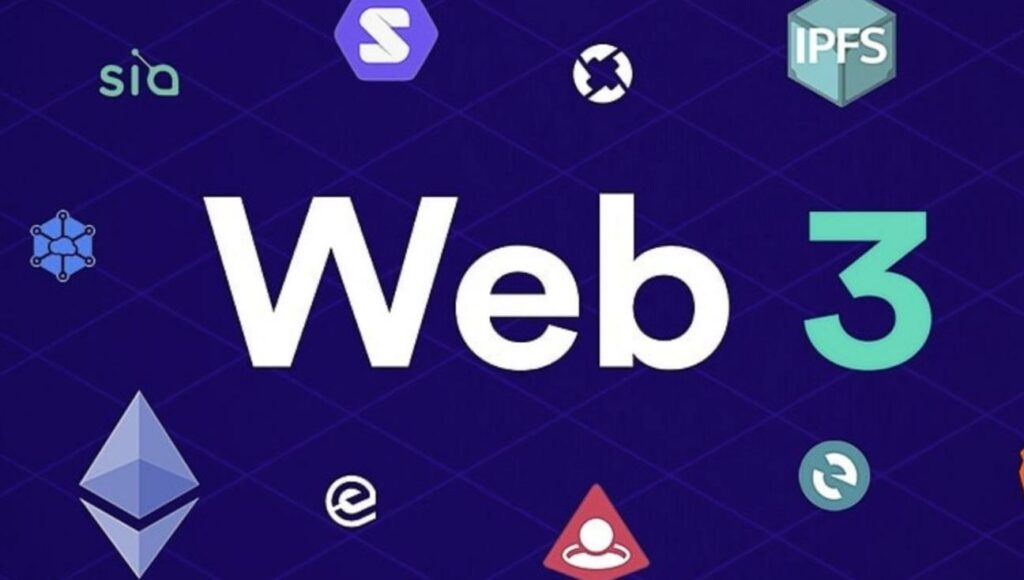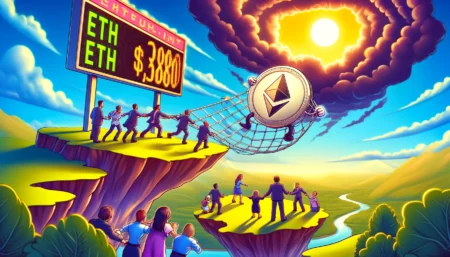Web3 is a very popular term this year, especially frequently mentioned by alternative finance cartoon characters and writers of tech-savvy tweet strings.
In 2021, if you want to raise your first capital and escape the critical thinking of investors, there are two “cheat codes” to use, one is “Web3” and the other is “Metaverse“. If you learned these buzzwords, congratulations, you now have $1 billion at your disposal and a good starting point, good luck and have fun.
How will Web3 change the future of human coming?
Despite the plethora of uncharacteristically thought-out articles from today’s leaders, there is still no consensus on “what exactly Web3 is.” The definition of “Web 3” depends on which faction you belong to, Web3 is a scam, Web3 is the future, Web3 is tokenizing the world, Web3 is an excuse for VCs to divest, Web3 is another name for cryptocurrency, and there are voices all over the place our ears. Even the crypto community can’t be sure if Bitcoin is Web3.
If “what is Web3” doesn’t have a unified definition, and the term has only really become a buzzword in the past half year, I think it’s safe to conclude that Web3 hasn’t really existed. However, it is clear that there are many ideas and experiments under the aggregate topic that keep coming out of the circle, and bystanders are inspired and creative, or completely disappointed.
What is the point of Web3
Here I will not repeat the relevant views on the uselessness of Web3, I will think about the possible definition of Web3 from the purpose of Web3. Do we need to drop Web2? What problem does Web3 solve?
decentralization of power
There is growing distrust of centralization. Whether it’s governments, central banks, or global tech giants, they’ve become stronger than nations. Decentralization, behavioral empowerment, and censorship have created a renewed interest in building trustless and censorship-resistant platforms that empower ordinary people and divide existing power structures.
value ownership
With the advent of Web2, the web changed from “reading” to “reading and writing”, becoming more social and participatory; the era of user-generated content began. Modern tech companies host content from users and then quietly monetize it. Harnessing our thirst for social interaction and reworking it through addictive product models, inserting ads, manages to distribute all user-generated value to shareholders. By the time you can become a shareholder in these companies, they are already worth billions of dollars and insiders are getting rich.
An idealized future network might be able to address these societal issues in a positive way, but also empower founders with powerful growth and retention tools to compete with incumbents.
We can build a network where users can share the value they create and drive adoption. In a network like this, it’s not up to tech managers to decide what we talk about, or how many ads we have to watch every day.
Maybe Web3 can give some rights to ordinary people who have spent thousands of hours in big corporations, but their energy has been reaped as profit for private shareholders.
Maybe the web can become more collaborative, not just extractive.
Everything can be Ponzied
A pessimistic idea: the future network could be full of tokenized microtransactions, rent-seeking on all user behavior, requiring users to own native tokens in order to operate their toasters properly.
It could be a network built on selling worthless ERC20 tokens to retail investors, and then the project fails. It extracts value in a more direct way than selling advertising, which took several years to emerge.
It could also be a network where cybercrime becomes more difficult to prevent without adequate means to deal with inappropriate content such as harassment or child abuse.
Perhaps full financialization would only benefit hedge funds adept at complex algorithms and giant early-stage VCs who became major owners of these tokens in private seed rounds.
Which way to go?
If you can imagine a happy future and a dystopian future, I wouldn’t blame you for expecting the worst possible future to come true. Modern businesses obviously often make the web more annoying: cookie permissions, data permission requests, banner ads, paywalls, loot boxes, and pay-to-play or kryptonite games — these are all second-best or anti-user changes.
If we look outside the circle and look at cryptocurrencies, we can’t blame outsiders for seeing something so similar to a scam. The wealth effect fuels the fiery words, deeds and arrogance of crypto market participants, while the self-ironic nature of crypto culture alienates outsiders.
I understand. Sometimes it was bad in the past and sometimes it is bad now, so you vehemently reject the idea that you can find holes in the theory. You don’t have to think hard to imagine the ways in which decentralized systems can be exploited; and you don’t have to look very far to find examples of token projects that exploit ordinary people for profit.
But at the same time, you don’t have to look too far to see the power of ownership and self-governance in existing owner-operated systems.
Without the intervention of a central authority, Bitcoin BTC 1.84% has gone from “darknet drug money” to an institutionally recognized store of value asset in a decade.
Ethereum has evolved from a “tech nerd Ponzi scheme” to a vast owner-operated network with billions of transactions per day.
Businesses, users, and third parties contribute to creating incremental value for both networks, and they can share in the rewards. Anyone can participate and get value back, not just the founders or investors.
Even a purely interesting social consensus project like ConstitutionDAO could be an example of shared user-generated value creation among all. Despite failing to capture the constitution, the value of the DAO becomes higher, and that value goes back to the participants.
Perhaps this shared ownership could become a coercive feature to break with existing conventions of how tech companies can or should operate.
Inequality
Inequality is becoming more and more apparent. During the pandemic, asset prices skyrocketed and the rich got richer. Meanwhile, small businesses struggled and the working class quickly ran out of their stimulus cash. More than 50% of Americans have less than 3 months of emergency savings.
Wage growth has almost stagnated, but housing costs have risen by more than 400% over the past 40 years. People have begun to find themselves trapped in a system that is not conducive to their own development, and the future they want is quickly slipping away.
So the increase in the number of RobinHood retail options traders and Dogecoin DOGE -1.67% buyers makes sense. Lottery-style investing has become a viable option for those who cannot see the hope of achieving their financial goals through saving and investing.
Perhaps a more socialist model of equity or token ownership could serve as capitalism’s answer to universal basic income. Rather than having the state print a little cash for families and tax future generations to pay for this generation, perhaps people sharing the wealth produced could create a fairer world.
If users vote through their wallets to select companies for which they have already participated in value creation and have been rewarded, these companies will discover a huge network effect tool to grow rapidly and displace incumbents. Those who are really involved can choose to own some of the value they co-create, rather than handing it all over to founders and investors.
If other things are equal, between two identical services, users are more willing to use the service that can bring them value back.
Perfect idea
It was another immaculate concept when Bitcoin was created. Satoshi Nakamoto is probably one of the most important creators in history when it comes to ensuring fairness for all. No share of tokens was taken privately, nor given to any private investors. All users mine their bitcoins on equal terms. Although they have mined millions of bitcoins through their early participation, they have no other advantages beyond that.
When Ethereum ETH -1.29% was created, they pre-mined some tokens and held a free and competitive public ICO. Everyone can participate, and a total of 60,000,000 ETH was sold for about $0.30 per ETH. The founders of Ethereum do reserve some tokens for themselves and the Ethereum Foundation, with founder Vitalik accounting for the most, but the percentage earned is less than 1% of the total ETH supply. Compared to traditional stocks, this share of ownership is quite small.
Although the founding of Ethereum is slightly less “fair” compared to Bitcoin, it still has a relatively fair and open model of participation. In 2017, the ICO model became popular, but it gradually degenerated as problems such as pre-sale and private sales to insiders emerged.
In 2018-2019, fair terms for participants to compete freely are a thing of the past. The U.S. Securities and Exchange Commission began regulating ICO projects to protect the interests of retail investors. Due to regulatory pressure and a lack of clarity, cryptocurrency builders can only raise capital from venture capital firms rather than the general public. It is no longer possible for non-insiders to buy tokens on cheap early terms, while VCs can.
You see and feel very pessimistic about the transition from a network with no founder rewards, free competition, fair launch, to a large founder holding, VC investment, privatization gains. It seems that the purity and beauty created by Satoshi Nakamoto have been corrupted by greed.
But the truth is, cryptocurrencies are very popular right now. When Bitcoin first appeared, the value of the cryptocurrency was not obvious to many people. Whereas Bitcoin proved it had value, Ethereum reinforced that belief. Bitcoin has been on an upward trend since its inception 10 years ago, which has attracted a large number of venture capital institutions.
When Satoshi Nakamoto launched Bitcoin, the mining difficulty was very low, and a block reward of 50 BTC could be mined with a computer. Undiscovered Bitcoin became a fair start for hobbyists, not a playground for hedge funds. If a project were to try to launch in the same way today, the already wealthy would easily hold all the hashes, accumulate all the tokens, and pay for electricity to get a share of the new project. In such an environment, founders might as well sell directly to them and secure long-term funding.
I prefer open sales to everyone on the same terms, but I also understand that founders don’t want to take unnecessary regulatory risks, so it’s easier and less expensive to deal with professional investors, not to mention the misuse of carriers and 2017 Most ICOs go to zero.
Do you have to get rich while building your future?
No one would argue that Vitalik doesn’t deserve to own 0.7% of ETH’s supply because of his huge contribution to Ethereum. Likewise, no one would argue that Satoshi Nakamoto mined 1 million bitcoins unfairly.
However, it cannot be ignored that the biggest proponents of Web3 are venture capitalists who have already found success. Somewhat ironically, but not surprisingly, these entities are trying to become super-investors in this utopian, shared and community-governed economy by buying a majority stake in a seed round at a low price.
It also cannot be ignored that cash-hungry founders and investors use existing market dynamics to create behemoth-style bull projects to fill their wallets.
So I think four things are true:
- There is consensus that founders are well-deserved and expected to get rich when they create enormous value in the world.
- There is a rough consensus that early funding from venture capital firms or angel investors is also a service and should be rewarded when the projects they fund create great value for the world.
- Many argue that these funding opportunities should be open and fair, rejecting existing investor rules of compliance as too paternalistic or counterintuitive.
- Everyone hates that founders or VCs can get rich without contributing anything of value.
Admittedly, this last point has now become commonplace in the crypto world. Many CEOs of underdeveloped products became billionaires overnight simply by issuing tokens and promising NFT-powered video games, or building a “Web3” platform with double-digit active users.
Summarize
Web3 doesn’t exist yet. There is a lot of Ponzi scheme in the bull market, and it may not be accurate to assess its value, but it is also not objective to ignore the dynamics of the market.
I think the real world and social problems of Web2 are there and worth solving, and there is a lot to look forward to in the vision of Web3.
I think it would be good for the world to replace a central authority with an open, transparent and permissionless system that rebalances and decentralizes power.
I hope the financial boom in the crypto market will attract bright minds away from advertising people and build a more equitable and cooperative future.
But I wouldn’t be surprised if crypto project founders get rich and don’t care about their projects anymore, and new networks are built by late capitalist greedy legions that make you buy a shard on Cardano ADA -0.18% Convert micropayment NFTs to operate your electric toothbrush.






